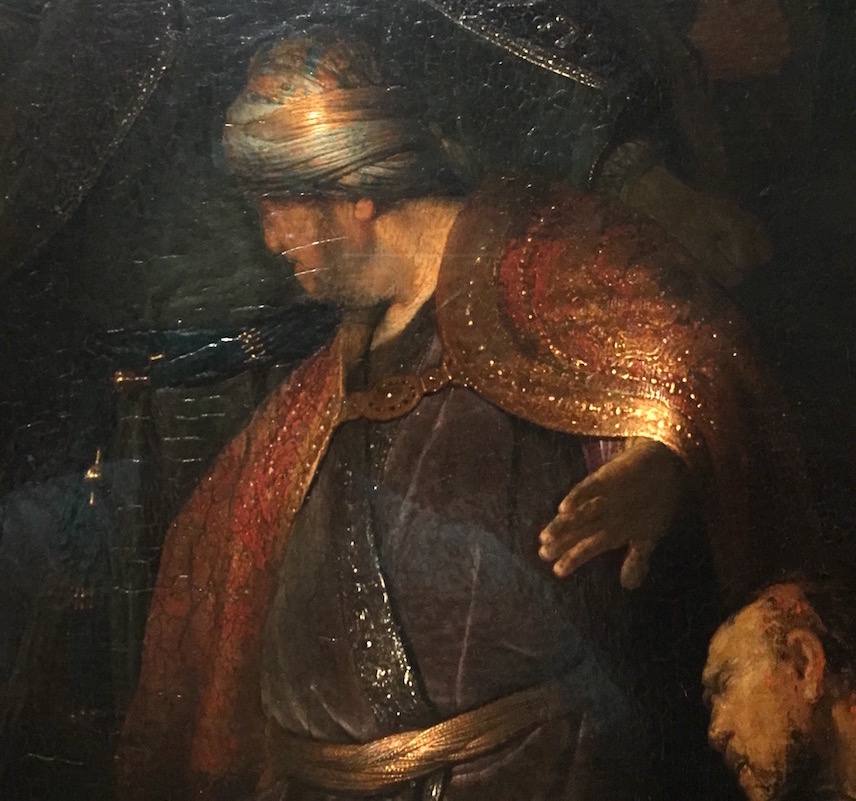September 21st, 2016 by dave dorsey

If art works to change the world in any way, it does so subliminally, uncontrollably, and by means that usually aren’t summarized in an artist’s purposes when making a poem, or song, or painting. In other words, art is life, as much as it’s a reflection of it, and only diminishes itself by becoming some instrument used to achieve a particular end in the world. I didn’t realize Stanley Fish had quit writing his columns for The New York Times until several months had gone by, and I suddenly identified the feeling of something lacking from my visits to the Times online. I realized it was his voice. So I ordered a compilation of his columns: “Think Again: Contrarian Reflections on Life, Culture, Politics, Religion, Law, and Education.” It’s such a relief to hear him say things like this again:
These columns are written under the shadow of the (perennial) “crisis of the humanities,”a crisis to which humanists have responded by mounting ever more elaborate (and unconvincing) justifications of the humanities as a practice that will save democracy, if not the world. These justifications, wittingly or unwittingly, have the effect of implying that the humanities have nothing to say for themselves, that any defense of them can only be instrumental. An instrumental defense of the humanities is a defense that rests everything on the humanities’ usefulness to some other project—a robust economy, the realization of democratic principles, a peaceful world. The question posed to the humanities is “What are you good for?,”and the answer is assumed to issue from a measure of “good”that the humanities do not contain. The answer given in the columns reprinted here is that the humanities are good for nothing, for that is the only answer that preserves the humanities’ distinctiveness. If humanistic work is valued because of what it does politically or economically or therapeutically, it becomes an appendage to these other projects, and in a pinch it will always be marginalized and perhaps discarded when its instrumental payoff fails to arrive, as it always will. The paradox is that the stronger the case made for the utility of the humanities, the weaker the case for their support. In order to be truly healthy, at least in an internal way, the humanities must be entirely disassociated from the larger world of political/ social/ economic consequences, must, that is, be appreciated for their own sake and for no other reason.
September 16th, 2016 by dave dorsey

Judas Returning the Thirty Pieces of Silver, Rembrandt, oil on panel, detail
I rarely go out of my way to see a Rembrandt. He’s one of those painters you assume you know inside and out. What more is there to know? Yet, every time I spend time with one of his paintings, I walk away almost in disbelief at his genius and his flawless skill. Nothing about Rembrandt’s approach to painting appeals to me, personally: the staging and use of darkness to create cinematic effects, the way in which his chiaroscuro banishes most color from his palette, except in subtle concentrations, and even then it’s usually a world of brown and gray. I don’t live in a world that looks this way unless I’m glancing around a room lit only by the glow of a flat-screen TV. Yet when you stand before one of his great paintings, it’s jaw-dropping and almost dumbfounding. I felt that way in 2014 at The Frick, when I saw Simeon’s Song of Praise, a small canvas depicting a scene that feels enormous, and I had an even more intense reaction last week to Judas Returning the Thirty Pieces of Silver, on view until Sunday at The Morgan Library. The two paintings were completed two years apart, the latter when Rembrandt was only 23. How does a kid paint something this masterful, not only in technical skill but in its depth of understanding and empathy? When I saw this painting, it finally struck me that Rembrandt belongs in that cohort of rare, black swans who achieved effortless perfection at the earliest ages: Mozart, Rimbaud, Hendrix, Keats. In the case of both paintings I was astonished, the way I was six years ago when I saw how El Greco rendered the faces in The Coronation of the Virgin in a show at Onassis Cultural Center–overwhelming emotion and thought conveyed in faces that required, at best, a couple square inches of painted surface.
This show is built around only one painting, as the Frick show was primarily a way to offer the public a view of Vermeer’s Girl with a Pearl Earring, and the Metropolitan Museum of Art’s show in 2009 offered access to his Milkmaid. In all three instances, the exhibitions were devoted to work on loan from European collections, and they all gave a single painting its own stage supplemented by collateral work that helped put it into historical perspective. Of the three, the Morgan’s is the most effectively curated. More than two dozen drawings MORE
September 4th, 2016 by dave dorsey

Child at Sunset, Henry Coupe, oil on linen, 10″ x 10″
I’m driving into the city on Thursday to attend the opening of Henry Coupe’s posthumous solo exhibition at Viridian Artists. His wife, Ann, will be there in his stead, since Coupe died in December at a Utica nursing home. I visited with Ann in 2014 at their home and was able to see all or most of the work in this show. She was a gracious host, talking about her husband and his work with great affection and respect. She had arranged all his paintings on the floor of their living room, standing them upright in their floater frames, as if they were our audience rather than the other way around. I sat cross-legged and spent time studying them as she sat on the couch, talking about her life with Henry.
I was a member at Viridian when, shortly after Couple joined the gallery, I first spotted The Letter, one of his small paintings on the shelf behind the greeter’s desk. I immediately asked who’d painted it and learned what little was available about him: that he had studied at the Munson Williams Proctor Institute under Oscar Weissbuch, a student of Hans Hoffman, at the end of WWII, and he had gone on to exhibit his work in New York City during the 60s, while teaching in Utica. He retired from teaching in that city’s public school system in 1976 and continued to paint until he was no longer able to do it.
Viridian offers a lovely description of his work on its website:
Henry Coupe spent his life creating small paintings, most under 24”, executed in strong, simple strokes, of people in landscapes. His people are shown both alone and in small groups. Tiny in scale, his delicate oils are filled with feeling and speak of love, MORE


